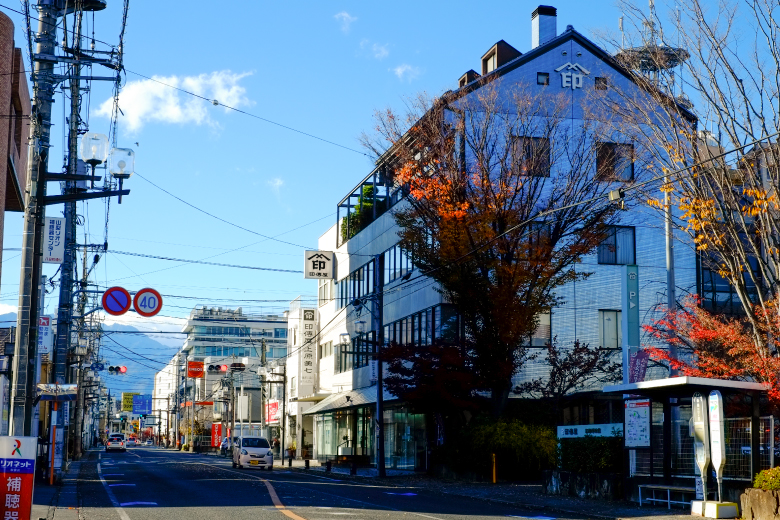The former Yokamachi area was near present-day 4- to 5-chome, Chuo, Kofu City, which overlapped with the old Koshu-kaido Road. It was at the entrance of the town around Kofu Castle, and a market was held there during the Edo Period (1603-1868) on the 8th of each month. It is said that the market flourished with many people.
The market is described in Urami Kanwa, written by Noda Shigetaka, a Kofu kimban-shi (Edo shogunate officer assigned to Kofu) as having a kimono fabric store, a pharmacy, a rainwear store, etc. in Yokamachi, which is described as the best place in the Fuchu area. This shows that Yokamachi was the center of trade around Kofu Castle.
Kofu Yokamachi Shogatsu Hatsuuri no Kei (A Landscape of the First Sales in Yokamachi area during the New Year’s Holidays) by ukiyo-e print artist Utagawa Kuniyoshi depicts the excitement of people shopping in Yokamachi area at the first market of the year. The town bustled with people. Next to the painting, we can see the names of Koshu specialty sweets still available today, sweets such as Tsuki no Shizuku and Genji Kurumi.
The market is described in Urami Kanwa, written by Noda Shigetaka, a Kofu kimban-shi (Edo shogunate officer assigned to Kofu) as having a kimono fabric store, a pharmacy, a rainwear store, etc. in Yokamachi, which is described as the best place in the Fuchu area. This shows that Yokamachi was the center of trade around Kofu Castle.
Kofu Yokamachi Shogatsu Hatsuuri no Kei (A Landscape of the First Sales in Yokamachi area during the New Year’s Holidays) by ukiyo-e print artist Utagawa Kuniyoshi depicts the excitement of people shopping in Yokamachi area at the first market of the year. The town bustled with people. Next to the painting, we can see the names of Koshu specialty sweets still available today, sweets such as Tsuki no Shizuku and Genji Kurumi.
